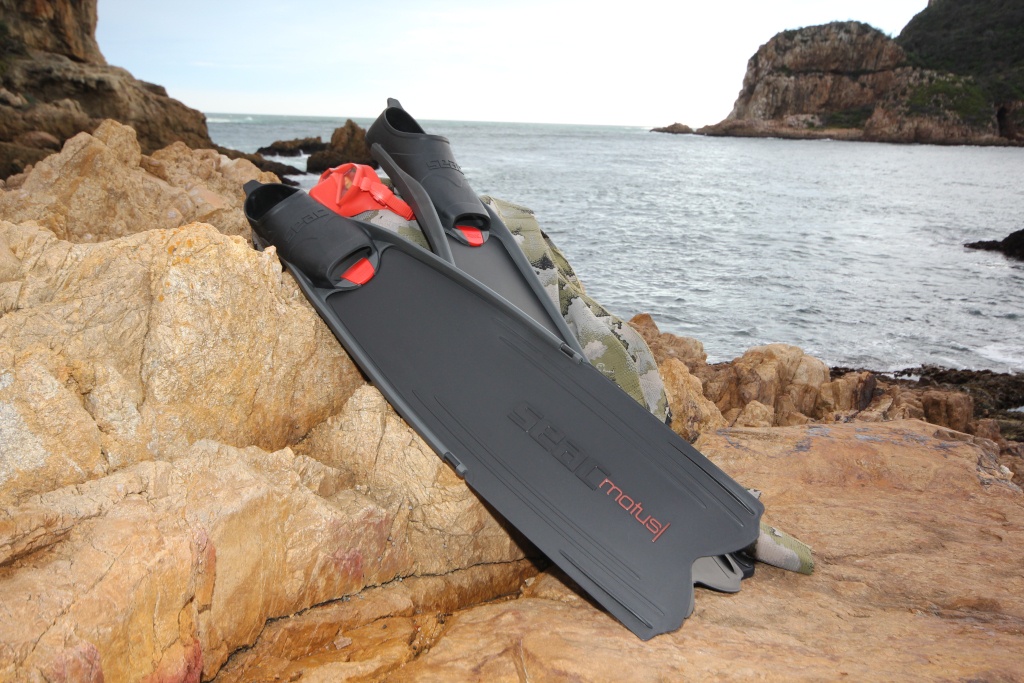Selecting the product material is a common problem that almost all freedivers/spearfishermen face while buying a new pair of fins. Despite the material differences, all freedive fins serve the same purpose.
They allow you to move faster underwater while spearfishing because of their long blade design. However, the material of freediving fins matters as it affects the efficiency, durability, and price of the product.
In this article, we’ll discuss whether fiberglass freediving fins are worth it or not. We’ll also discuss what material of fin blades you should choose depending on your experience level.
Fiberglass Freediving Fins
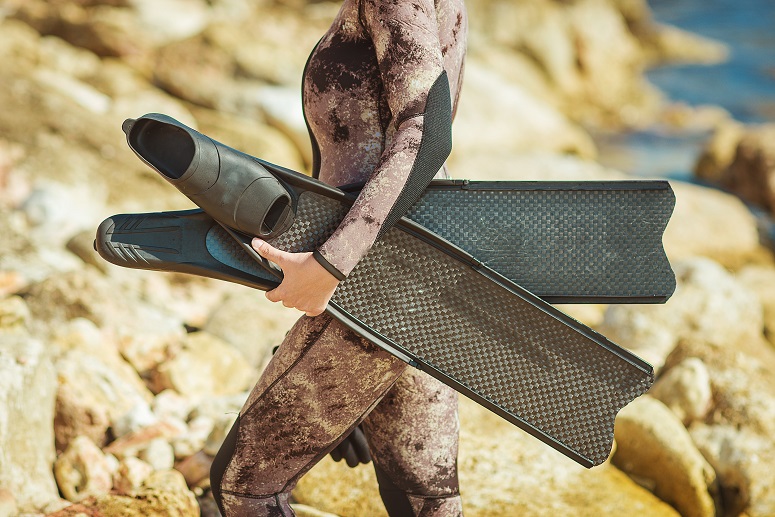
There are three different types of materials, including carbon fiber, fiberglass, and plastic, commonly used to make freediving fins.
Fiberglass blades are most often used for freediving and spearfishing in rocky locations with a lot of reefs. They’re slightly heavier but more durable than carbon blades.
A premium quality pair of fiberglass blades, with an aerospace-grade rating, is considered virtually unbreakable. They can withstand the test of time and take a lot of damage before becoming useless.
That’s why spearfishermen use them for freediving in shallow water with a lot of rocks and reefs.
Fiberglass Fins: Advantages and Disadvantages
Fiberglass fins are popular among intermediate experienced spearfishermen and freedivers and come with the following advantages and disadvantages.
Advantages
As mentioned above, fiberglass fins are extremely durable. They can withstand collisions with reefs and rocks underwater without breaking. Plus, they also retain their shape and stiffness throughout their lifespan.
Fiberglass blades offer great underwater performance and they’re also less expensive than their carbon counterparts.
Disadvantages
While fiberglass blades are very durable, they can be scratched easily. Additionally, they’re more expensive than plastic fins, which is why they’re not the best option for beginners.
Handling Fiberglass Fins
Interestingly, fiberglass blades managed to be durable and fragile simultaneously. They offer durability and can sustain the impacts of hard objects while swimming. However, they can get damaged easily if you drop them accidently.
You’ll also need to make sure that you don’t place heavy items on them while traveling to keep them safe. Make sure that you pack and handle your fiberglass fins with care so that they serve you for years to come.
To protect your investment a good quality freediving fin bag comes highly recommended.
Other Variations of Fiberglass Fins
There are different variations of fiberglass fins made from the combination of fiberglass and some other material. The following are the two common variations available in the market.
Fiber Composite Blades
The fiber composite freediving blades are made of epoxy resins and fiberglass layers. The combination of these two materials creates freediving fins that are more responsive than traditional fiberglass and plastic blades.
This type of freediving fins makes for a great option for boat diving and shore entries. They are very durable and usually feature a universal foot pocket design. Generally, the fiber composite blades come in plain colors but some brands offer camouflage designs as well.
Fiberglass/Carbon Composite Blades
These freediving fins come with carbon fiber outer layers and their inside is made of fiberglass. They’re lighter than fiber composite freediving fins and feature a less expensive price tag than the blades made of pure carbon.
Another interesting characteristic of these freediving fins is that they look pretty similar to carbon fiber fins.
What Types of Freediving Fins Do You Need?
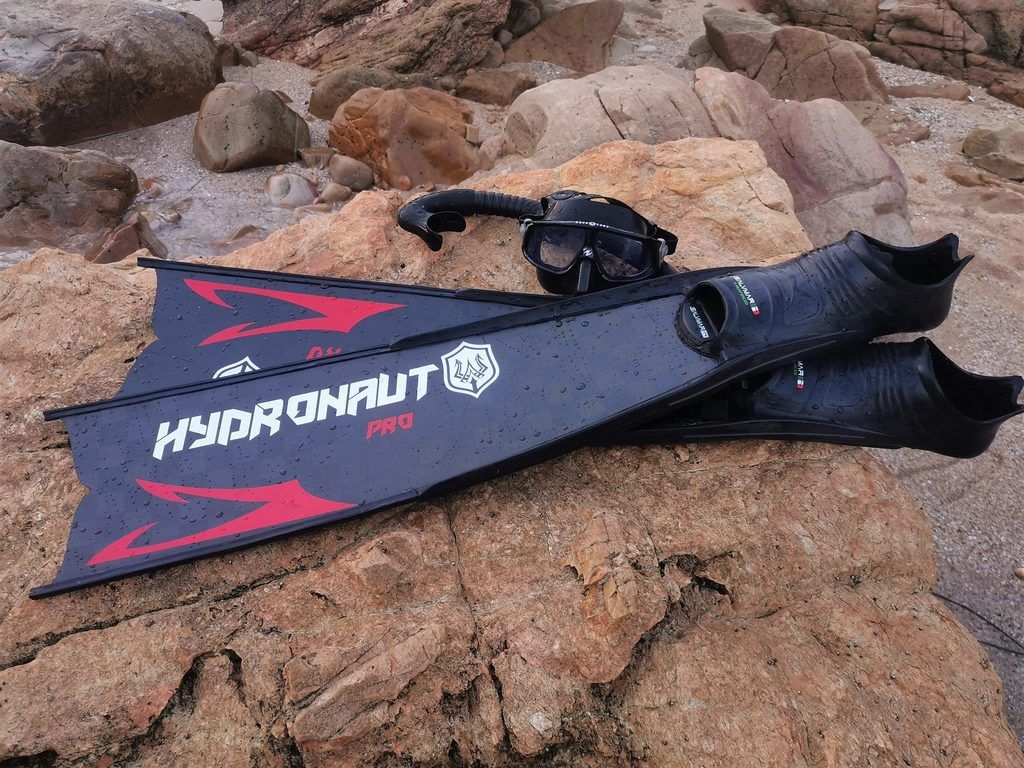
As discussed earlier, plastic, fiberglass, and carbon are the three main material types used to manufacture freediving blades. Ideally, you should choose the material type of your freediving fins based on your experience level.
Plastic
If you’re a novice diver and want to start your freediving or spearfishing journey, you should go with plastic fins. They are durable and can sustain the mishaps and accidents that can happen underwater.
The probability of these accidents is higher among beginners than intermediate and experienced divers. That’s because beginners tend to drag their fins across reefs and rocks or kick underwater structures hard while learning.
Even if you damage your plastic fins, it won’t cost you a whole lot of money as they’re also cheaper than other materials.
If you're looking for a great value for money set of plastic freediving fins then we highly recommend that you consider the Seac Motus Freediving fins.
Fiberglass
Plastic fins aren’t suitable for intermediate or experienced divers because they’re stiffer than other materials. Plus, the diver also needs to put more effort while finning.
Freediving fins made of fiberglass offer more efficient energy transfer as they create a better snap. They can also be used for deeper dives and can withstand the test of time.
Carbon Fiber Fins
Competitive and professional divers should use carbon fiber fins as they’re specially designed for enhanced performance. They’re the lightest fin blades available on the market and they make for the best fins for deeper dives.
While they’re most expensive, they create a high degree of snap and allow the diver to move quickly and easily underwater.
We love our Hydronaut Carbon Fiber fins.
Best Fiberglass Freediving Fins
Finding the best pair of new fins can be a challenging task because of the abundance of products available in the market. The following are two of the best pairs of fiberglass fins that you can choose.
MAKO Spearguns Pro Fiberglass Fins
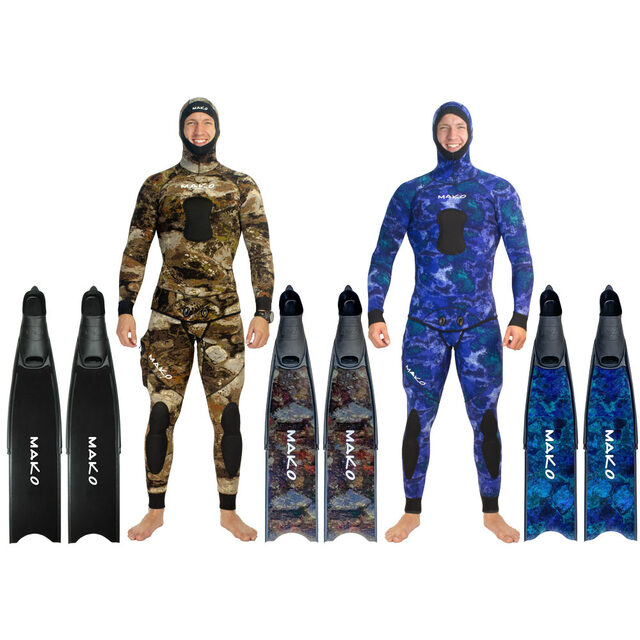
MAKO offers premium quality freediving equipment and the Spearguns Pro Fiberglass Fins are no exception. They feature soft interchangeable blades with the industry standard length of 80cm. They are best suited for experienced and professional freedivers.
These fins are equipped with hydrodynamic stability rails to offer the ultimate performance and freediving experience.
Plus, the blades are also shaped for enhanced hydrodynamics to ensure optimal energy transfer. Not only do they ensure improved energy and oxygen conservation but they also help you achieve deeper dives.
The MAKO Spearguns Pro Fiberglass Fins are available in six different sizes, three colors, and two stiffness levels. These options allow you to choose fins that suit your needs and preferences the best.
The Fiberglass Fins also feature blades angled at 20 degrees, in order to minimize cramping and muscle fatigue. While the fins are available in a softer stiffness level, you can upgrade to fins with medium stiffness for different freediving conditions.
Pros
- The blade length of these fiberglass spearfishing fins complies with the industry standard
- Available in multiple sizes, colors, and stiffness levels
- A 20-degree angle ensures an efficient finning technique and promotes the natural form
Cons
- Available in blades with a soft stiffness level
Leaderfins Blue Camo Freediving Fins
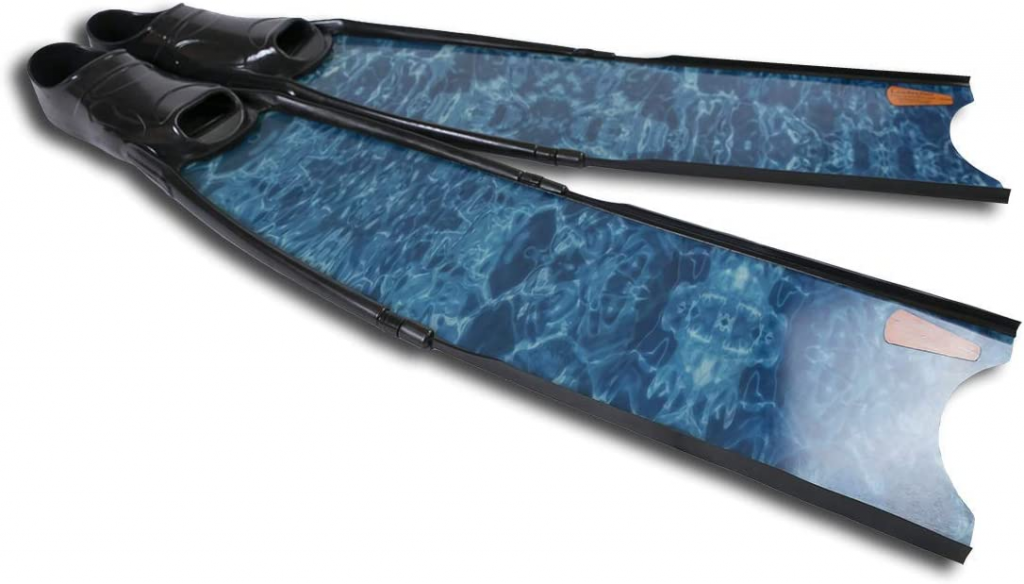
The Leaderfins Blue Camo Freediving Fins are made of a high-quality mixture of fiberglass and epoxy resin.
The pair of fins are available in three different stiffness levels, where hard suits over 100kg divers, medium up to 90kg, and soft up to 70kg.
The foot pockets of these spearfishing fins are incredibly comfortable, made of soft rubber, and feature extra thickness. The fins also prevent slipping to minimize the loss of energy while kicking.
The blades of the Leaderfins Blue Camo Freediving fins are angled at 20 degrees. It prevents cramping and fatigue by allowing your feet to stay in a natural form while swimming.
Pros
- Made of a high-quality mixture of fiberglass and epoxy resin
- Feature optimized blade construction to prevent slippage underwater
- Allow your feet to stay in a natural form
Cons
- Shipping time is longer as the fins are shipped from Estonia
Final Words
Fiberglass freediving fins offer durability and great performance. They’re worth it but you should avoid them if you’ve just started your spearfishing journey.
Go with the plastic fins, which will help you save money, get some experience, and improve your skills. Then you can move to fiberglass freediving fins for a better spearfishing experience.

